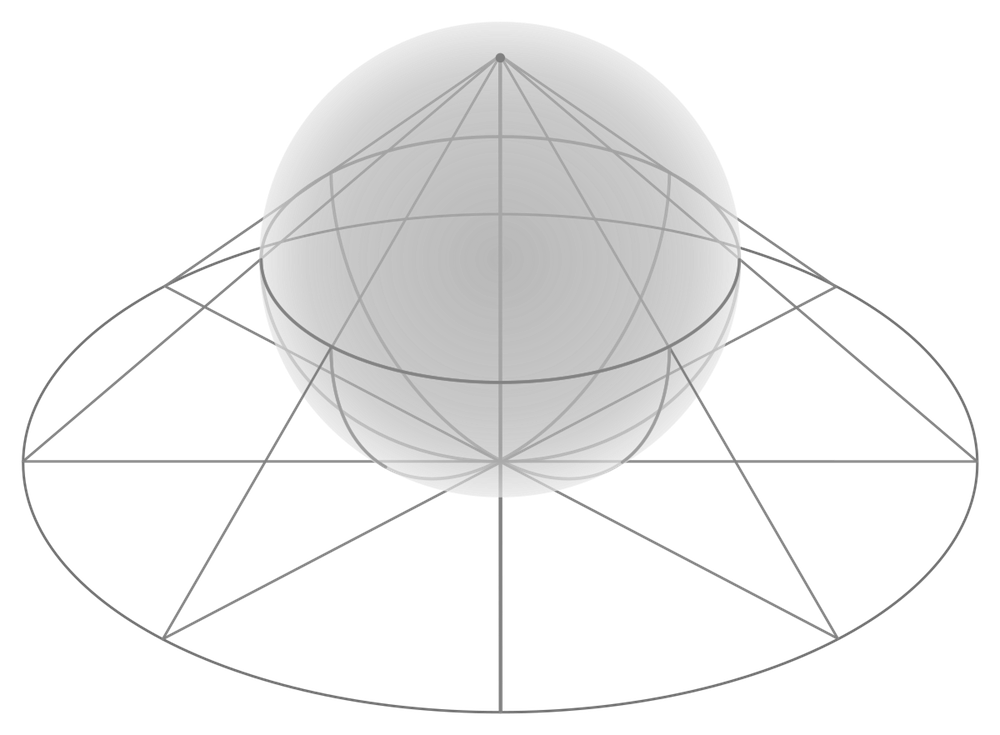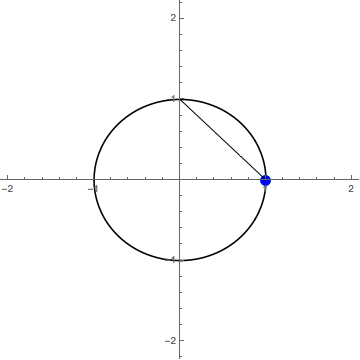Stereographic Projection

Introduction
Stereographic projection, in short, is a technique for preserving the structure of a set on in a -dimensional representation.Doing this can be extremely useful when, for example, you have some 4D surface on , but you want to be able to actually see it. This comes up in my work with Milnor Fibrations, where the fibers do in fact live on . This article will explain how stereographic projection works in general, and at the end there are some neat, interactive examples.
How does this sort of projection preserve what kind of structure, and how does it work exactly? Read more to find out.
Stereographic Projection
First of all I want to make notation clear, for the notation of an -sphere () is a little counterintuitive. A -sphere is a sphere in dimensions: A 1-sphere is a circle (2-dimensional), a 2-sphere is 3-dimensional, a 3-sphere is 4-dimensional, etc. Additionally, -spheres contain only the points that are the sphere’s radius away from the sphere’s center, and no points in between. This contrasts from a closed -disk (), which contains all the points on and within the . Now on to projection!
Let’s try projecting , so . It is possible to modify the location and size of but let’s not worry about that right now. To project a point , from this circle down onto , draw a line from the top of the circle, a point we will call , through making sure to extend your line so that it passes through . The point at which this line intersects is
In the gif below, the green dot is and the blue dot is

It is hard to tell, but the frame where the green dot would be at the top of the circle is missing (intentionally). It turns out that our name for that point was appropriate; it would map to on This doesn’t make sense for the projection though, so one way to solve this is just to remove from the domain, via the final mapping
This 2D to 1D example probably seems boring, but it clearly shows the process. If you are interested in the aesthetics of 3D to 2D stereographic projection, I recommend you check out Henry Segerman’s models that use a light source at [latex]\infty[/latex] to project a cutout [latex]\mathbb{S}^n[/latex] onto the ground: (7,3,2) triangles, (5,3,2) triangles, (7,3,2) triangles (small).

Interactive Examples
The 3D model below demonstrates a circle on being mapped to via stereographic projection (created by Kyle Ormsby). Note that the circle is preserved!
For some more interactive examples, I’ve created a Mathematica notebook that demonstrates stereographic projection into and, of course, Check it out here: stereographic projection
Application - Milnor Fibrations
Now that you’ve learned about the process of stereographically projecting, I reccomend that you check out my article about Milnor Fibrations, a mesmerizing application of this straightforward process of projecting from the dimensions above!
About the author
I am a computer science and math student here at Reed college. I live in the bay area in California, but much prefer the cooler and rainy weather in Portland. For this summer, I am working with Kyle on visualizing Gradient Flow, hopefully along with some aspects of Morse theory, and Milnor Fibrations. Along with mathematical visualization, I also am very interested in simulation. A lot of my work is available on my github page. Specifically, I investigate cellular automata variants and functional programming. Email me if you are interested in Reed, Project Project or any of my other work!